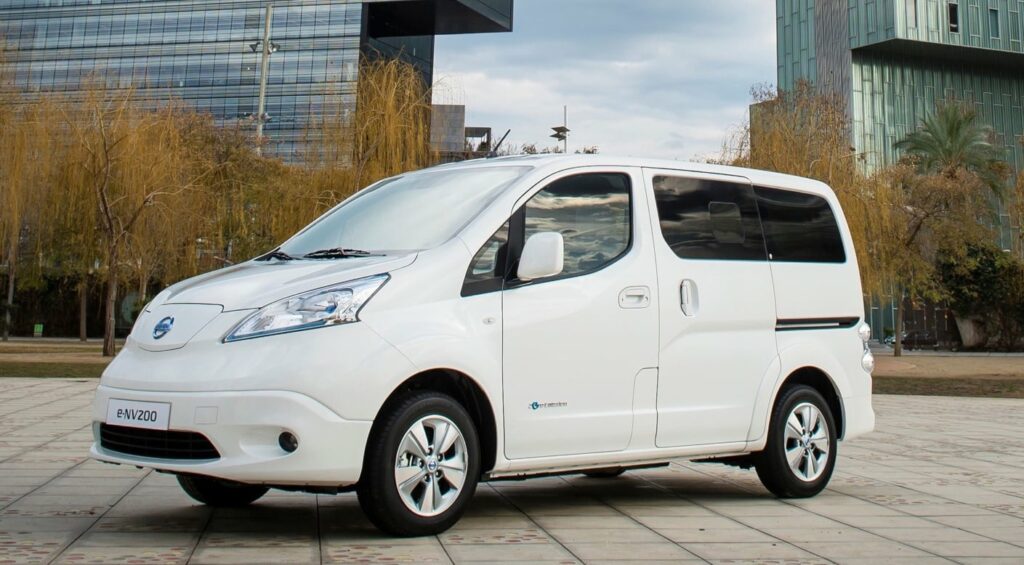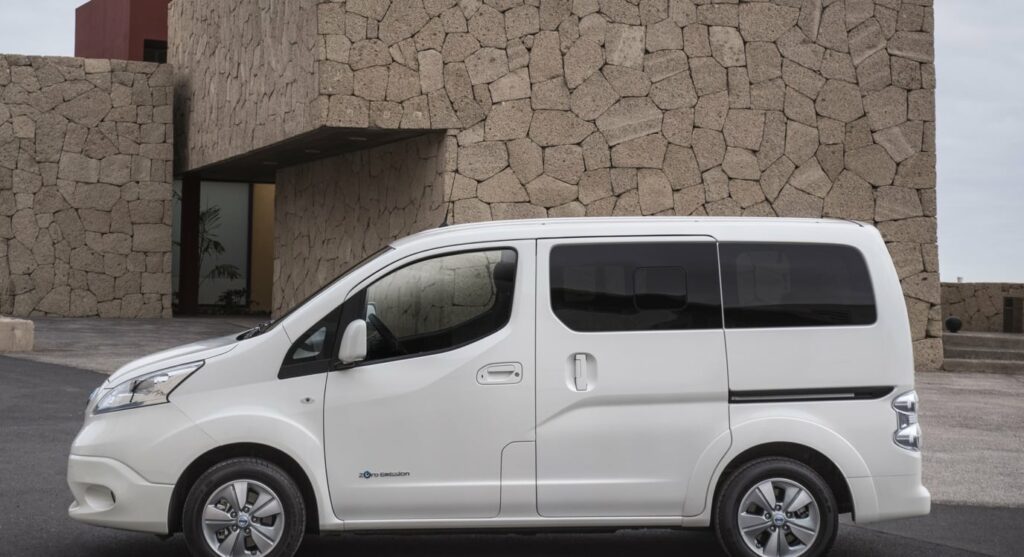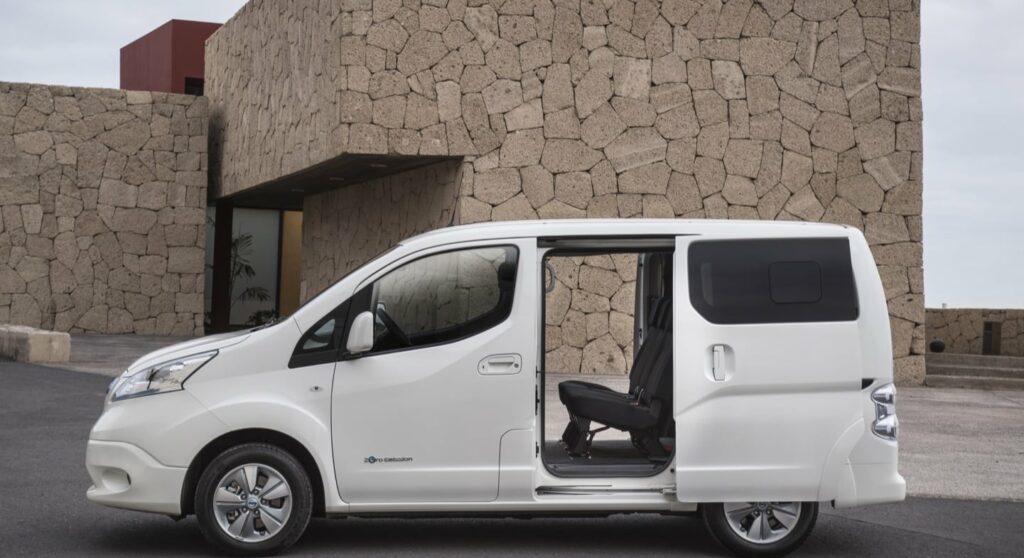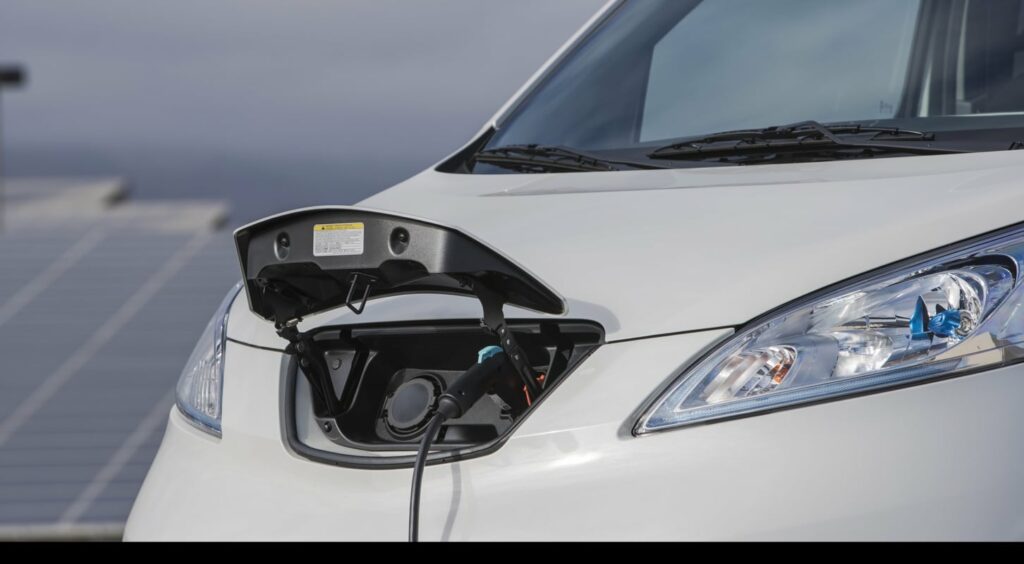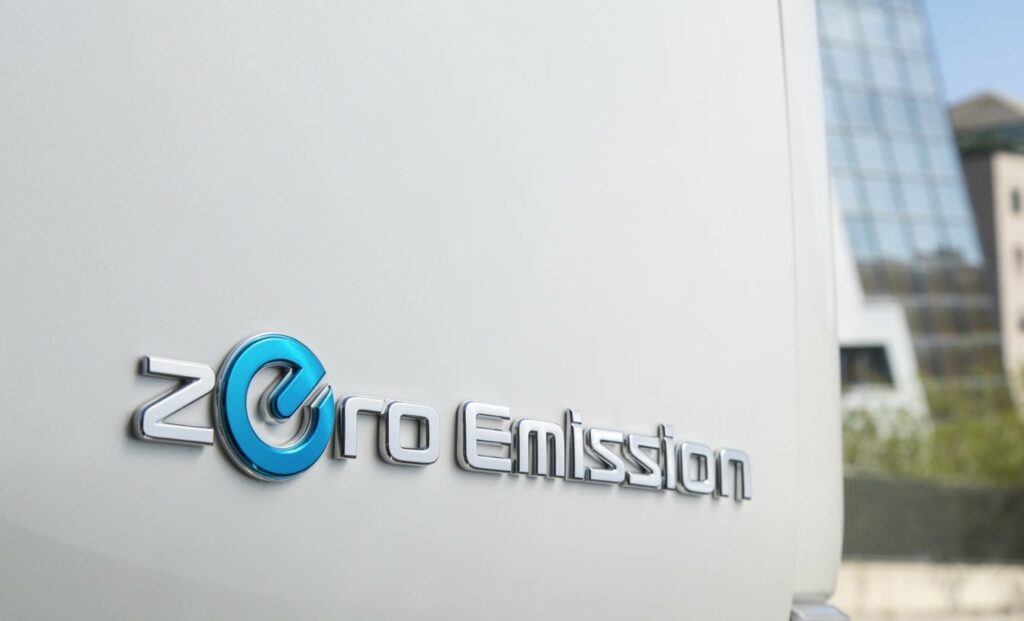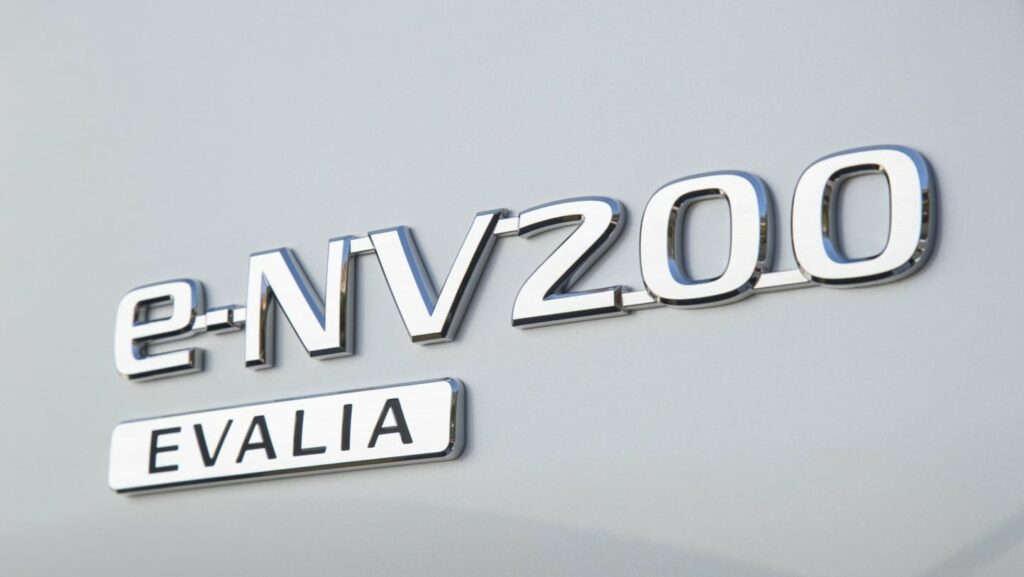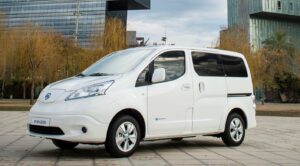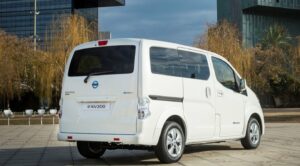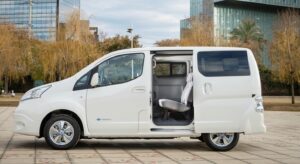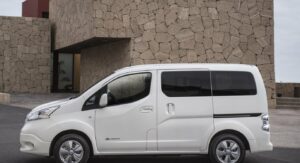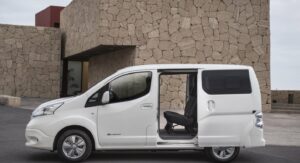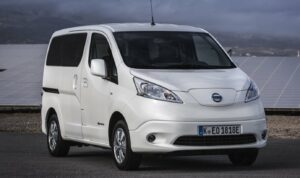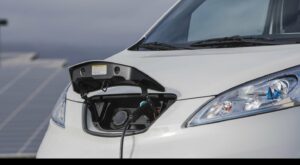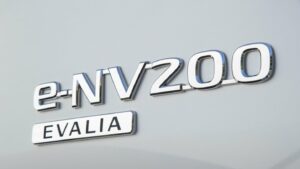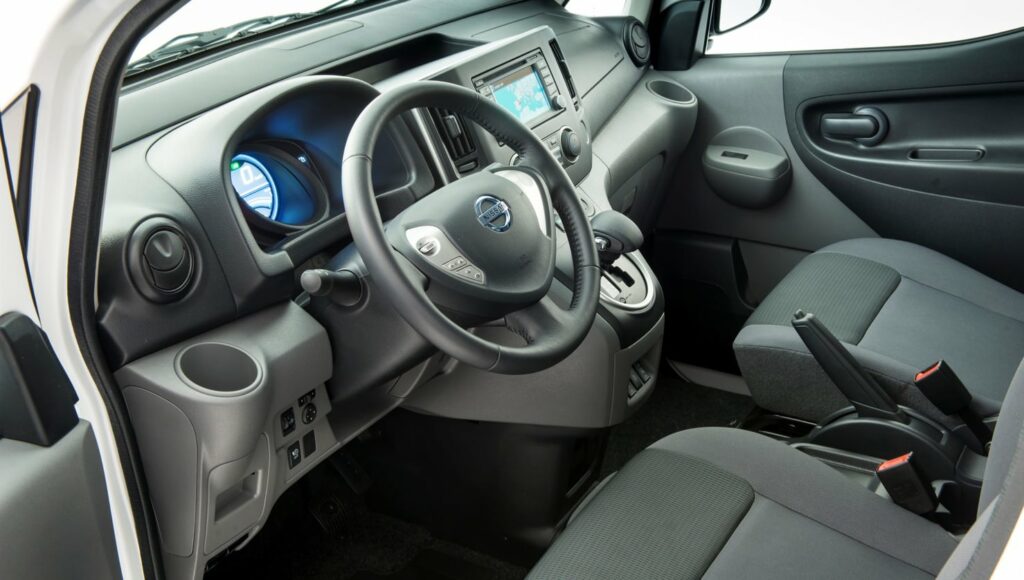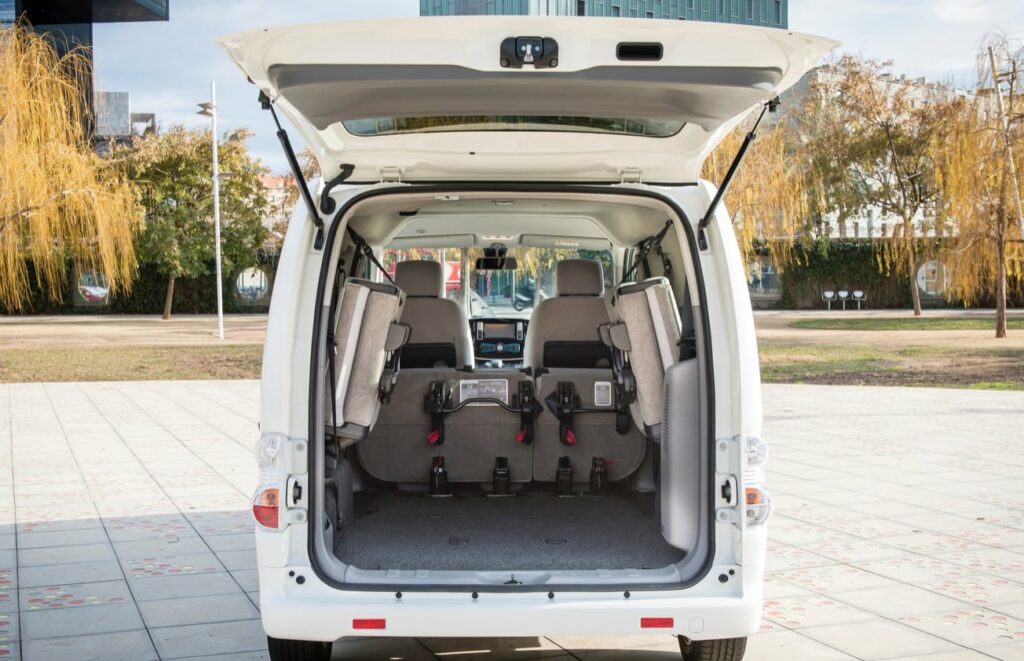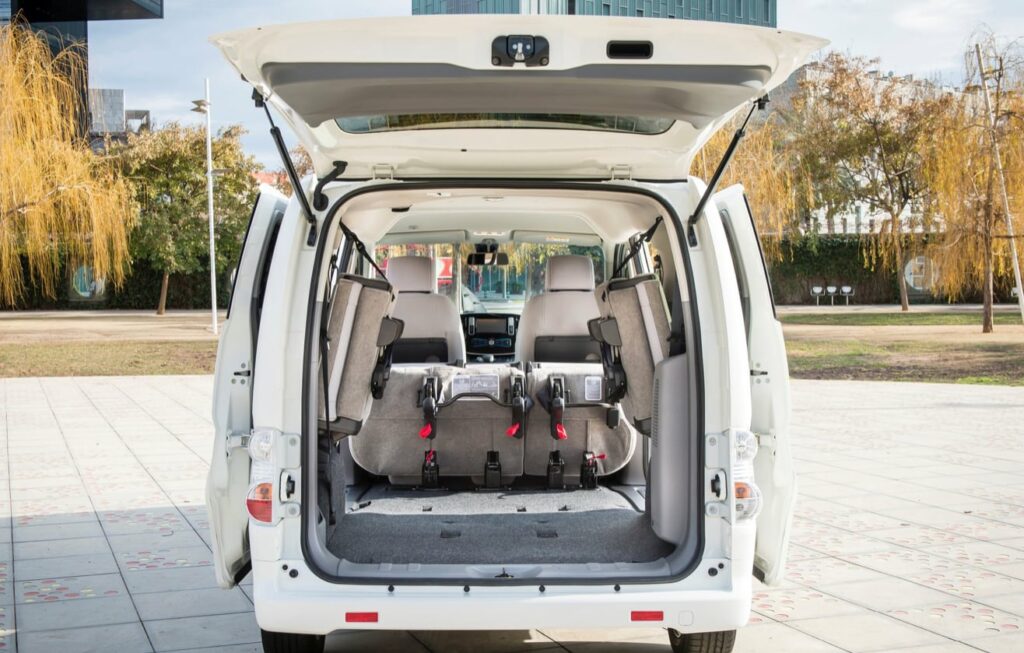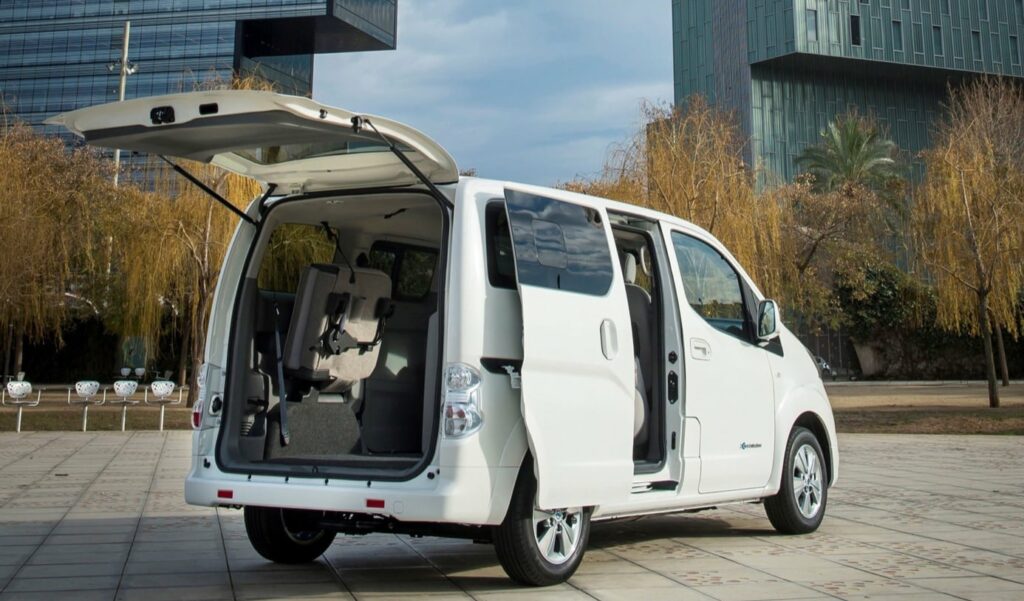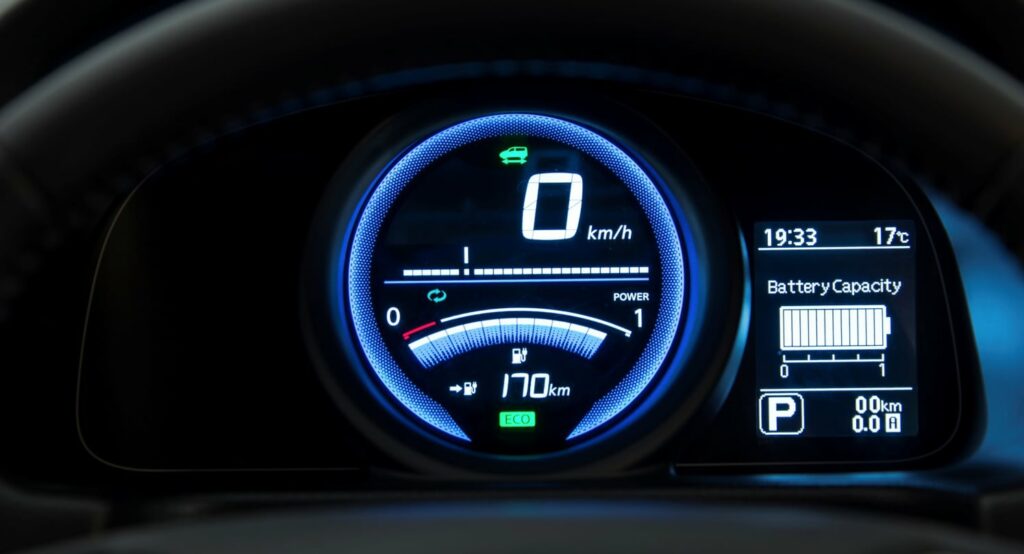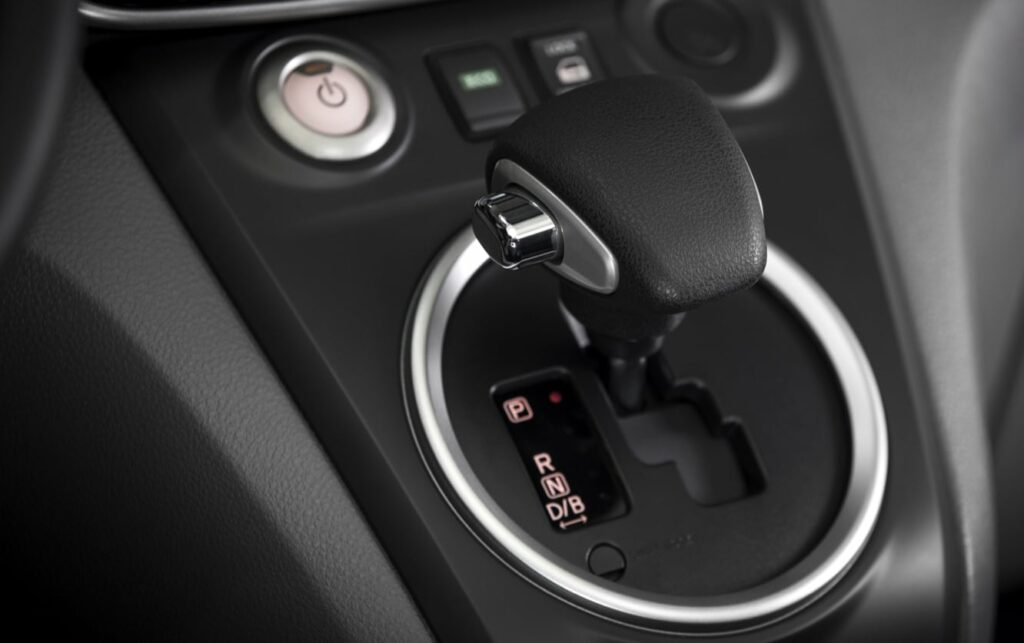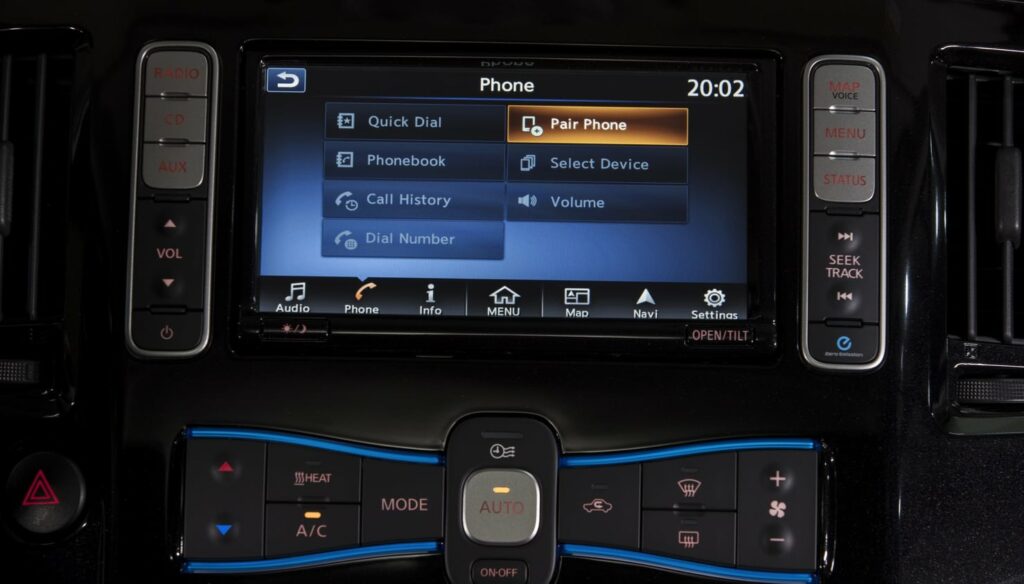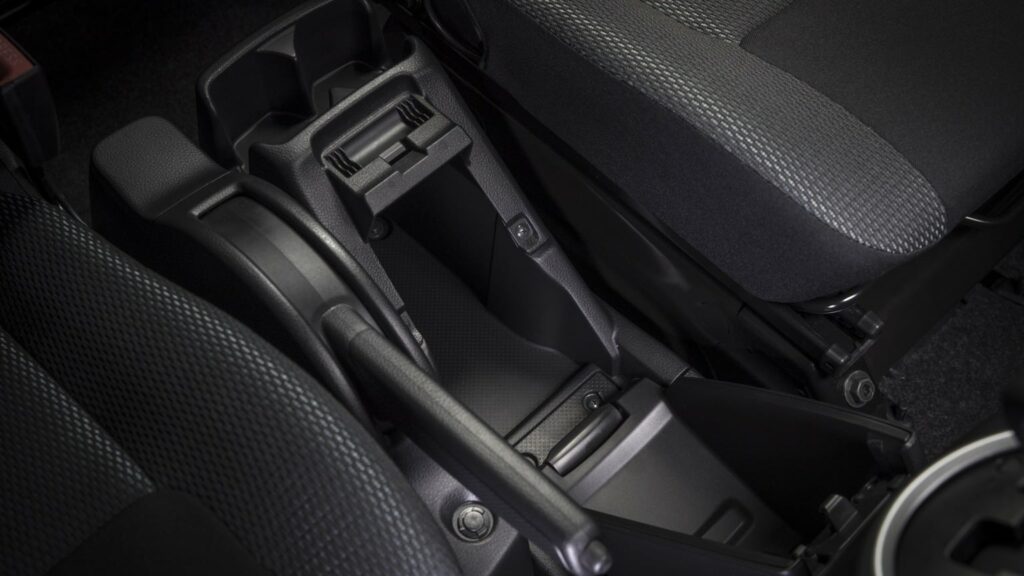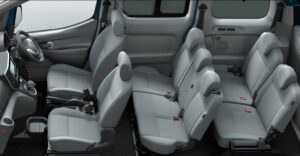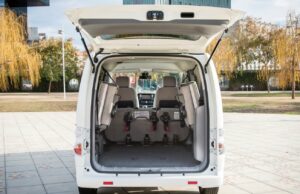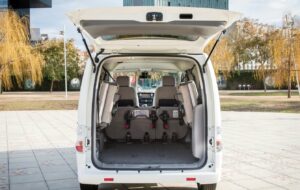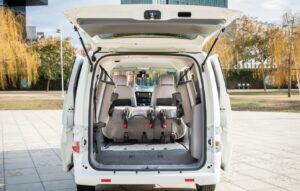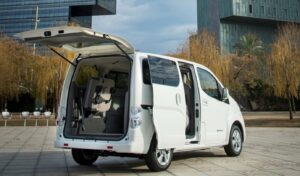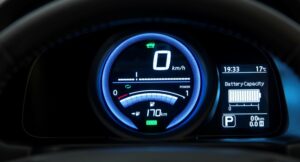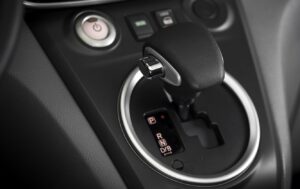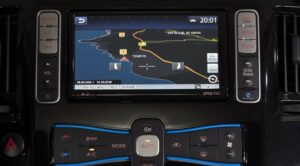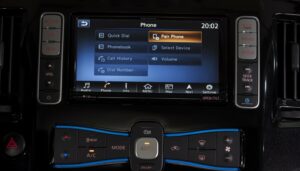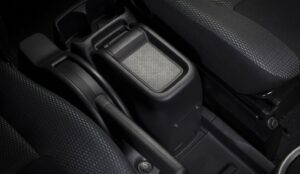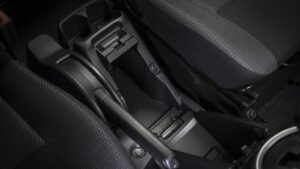Nissan e-NV200 Evalia
The Nissan E-NV200 Evalia electric van was launched in 2014 and has since been repeatedly hailed as one of the best electric trucks in the world.
The front-wheel drive Nissan e-NV200 Evalia has a payload of 703 kg despite its outward compactness and can be used to transport 5-7 passengers. This van is totally silent and flexible in operation with its powerful 80 kW engine and 24 kWh battery, giving it a cruising range of 123 km without cargo and up to 100 km with cargo. The manufacturer guarantees battery efficiency of 5 to 8 years if the vehicle is used properly.
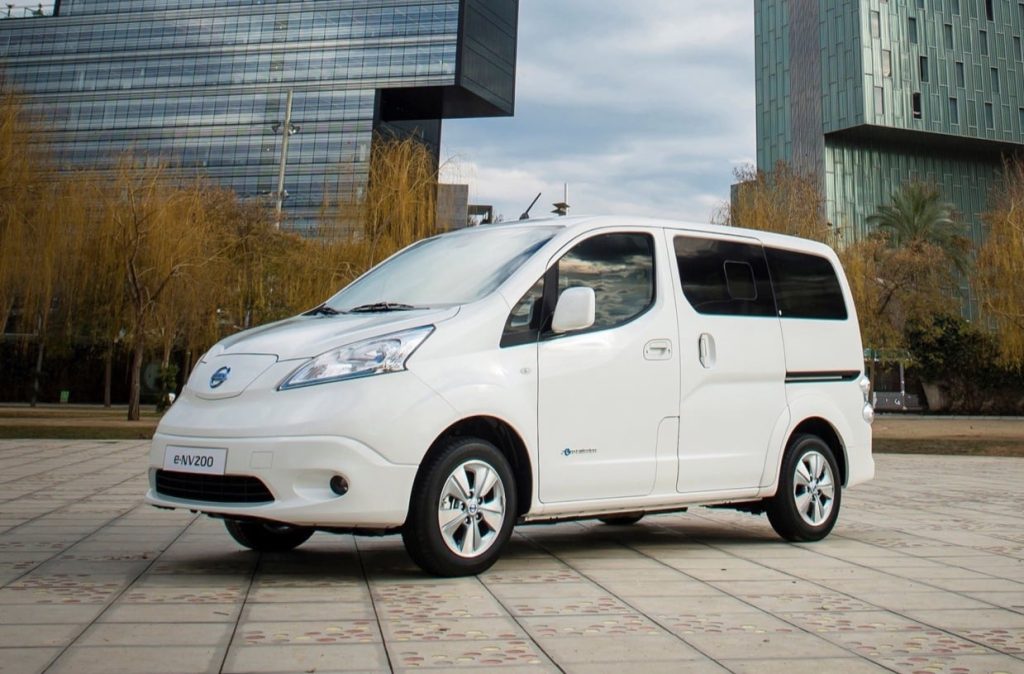
The van can be charged in 2 ways – from the home network (from a 220 V outlet) with a standard 3.6 kW charger in 8 hours (included in the price of the car), 6.6 kW in 4 hours (available separately), and a special 460 kW station in 30 minutes at 80%, all charging connectors are in the front.
The vehicle’s high recuperation allows it to retain its power reserve during braking and deceleration. Flexibility and ease of operation are due to the low center of gravity due to the location of the battery under the body and 15-inch wheels.
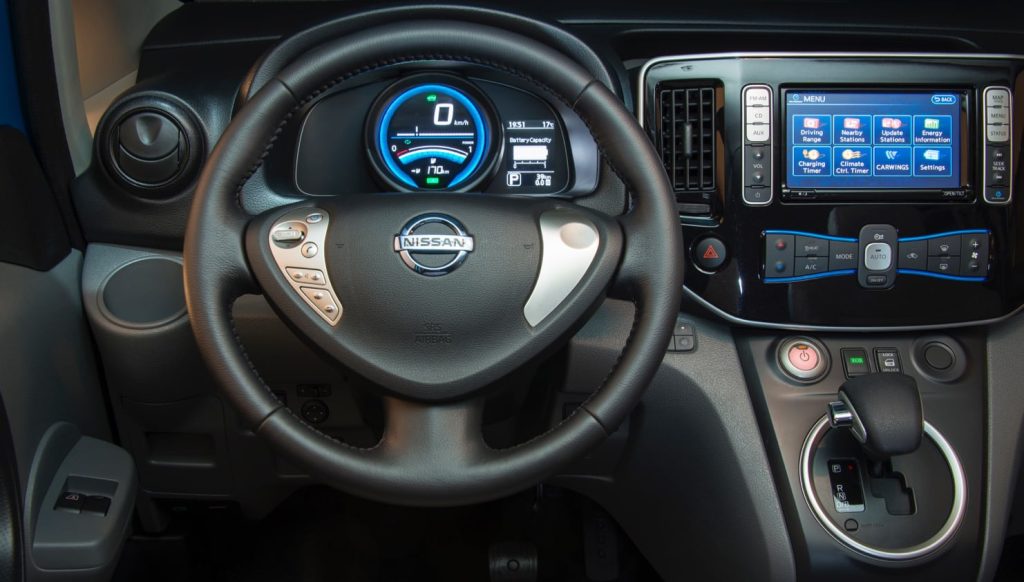
Vehicle conditions (battery level, climate control, speed, etc.) are monitored via a 5.8-inch (comfort class) and 7-inch (premium class) navigation display. Additionally, you can install the Nissan Connect application on any gadget (smartphone, tablet, computer), which allows you to remotely control the condition of the car.
The Nissan E-NV200 is equipped with driver and front passenger airbags, ABS anti-lock brakes, and a passenger beeper, and has crumple zones that are easily repaired if damaged. The electric car is available in 6 colors and different configurations depending on the class.
| Performance | |
| Acceleration 0 – 100 km/h | 14.0 sec |
| Top Speed | 123 km/h |
| Electric Range | 170 km |
| Total Power | 80 kW (109 PS) |
| Total Torque | 254 Nm |
| Drive | Front |
| Battery and Charging | |
| Battery Capacity | 40.0 kWh |
| Battery Useable | 37.0 kWh |
| Europe | |
| Charge Port | Type 1 |
| Port Location | Front – Middle |
| Charge Power | 6.6 kW AC |
| Charge Time (0->170 km) | 6h45m |
| Charge Speed | 26 km/h |
| Fastcharge Port | CHAdeMO |
| FC Port Location | Front – Middle |
| Fastcharge Power (max) | 46 kW DC |
| Fastcharge Time (17->136 km) | 41 min |
| Fastcharge Speed | 170 km/h |
| Energy Consumption | |
| EVDB Real Range | |
| Range | 170 km |
| Vehicle Consumption | 218 Wh/km |
| CO2 Emissions | 0 g/km |
| Vehicle Fuel Equivalent | 2.4 l/100km |
| NEDC Ratings | |
| Range | 280 km |
| Rated Consumption | No Data |
| Vehicle Consumption | 132 Wh/km |
| CO2 Emissions | 0 g/km |
| Rated Fuel Equivalent | No Data |
| Vehicle Fuel Equivalent | 1.5 l/100km |
| WLTP Ratings | |
| Range | 200 km |
| Rated Consumption | 259 Wh/km |
| Vehicle Consumption | 185 Wh/km |
| CO2 Emissions | 0 g/km |
| Rated Fuel Equivalent | 2.9 l/100km |
| Vehicle Fuel Equivalent | 2.1 l/100km |
|
Rated = official figures as published by manufacturer. Rated consumption and fuel equivalency figures include charging losses.
|
|
|
Vehicle = calculated battery energy consumption used by the vehicle for propulsion and on-board systems.
|
|
| Real Energy Consumption between 145 – 308 Wh/km | |
| City – Cold Weather | 206 Wh/km |
| Highway – Cold Weather | 308 Wh/km |
| Combined – Cold Weather | 255 Wh/km |
| City – Mild Weather | 145 Wh/km |
| Highway – Mild Weather | 247 Wh/km |
| Combined – Mild Weather | 195 Wh/km |
| Energy use for each trip will vary considerably depending on the driver and the conditions. Therefore, we have provided a range of estimates which can be useful in developing an understanding of the potential benefits of this technology. | |
| Dimensions and Weight | |
| Length | 4560 mm |
| Width | 1755 mm |
| Width with mirrors | 2011 mm |
| Height | 1858 mm |
| Wheelbase | 2725 mm |
| Weight Unladen (EU) | 1667 kg |
| Gross Vehicle Weight (GVWR) | 2250 kg |
| Max. Payload | 658 kg |
| Cargo Volume | 2000 L |
| Cargo Volume Max | 3000 L |
| Cargo Volume Frunk | No Data |
| Roof Load | 100 kg |
| Tow Hitch Possible | No Data |
| Towing Weight Unbraked | 0 kg |
| Towing Weight Braked | 0 kg |
| Vertical Load Max | No Data |
| Miscellaneous | |
| Seats | 7 people |
| Isofix | Yes, 2 seats |
| Turning Circle | 10.6 m |
| Platform | No Data |
| Car Body | Small Passenger Van |
| Segment | N – Commercial |
| Roof Rails | No |
| EV Dedicated Platform | No Data |
Home and Destination Charging (0 -> 100%)
A public charging station is required to use the highest possible charging rate. The EVSE/charging station’s charging capacity affects how long it takes to fully charge the battery. The table below shows all possible options for fully charging the Nissan e-NV200 Evalia .
In Europe, plugging an electric car into an outlet is often as easy as plugging it into a household outlet, but there are differences from country to country. The table below shows the different ways to charge the Nissan e-NV200 Evalia , but in some countries some chargers may not be availa
Type-1-J1772
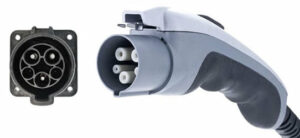
| Charging Point | Max. Power | Power | Time | Rate |
| Wall Plug (2.3 kW) | 230V / 1x10A | 2.3 kW | 19 hours | 9 km/h |
| 1-phase 16A (3.7 kW) | 230V / 1x16A | 3.7 kW | 11h45m | 14 km/h |
| 1-phase 32A (7.4 kW) | 230V / 1x29A | 6.6 kW | 6h45m | 25 km/h |
| 3-phase 16A (11 kW) | 230V / 1x16A | 3.7 kW | 11h45m | 14 km/h |
| 3-phase 32A (22 kW) | 230V / 1x29A | 6.6 kW | 6h45m | 25 km/h |
CHAdeMO
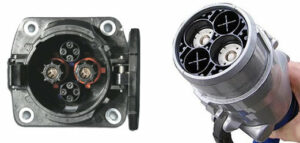
| Charging Point | Max. Power | Avg. Power | Time | Rate |
| CHAdeMO (50 kW DC) | 46 kW | 40 kW | 41 min | 170 km/h |
| Brand | Nissan |
| Model | e-NV200 Evalia |
| Body Style | Small Passenger Van |
| Car Engine | electric |
| Motor power | 80 |
| Maximum Torque, Nm | 254 |
| Battery Energy, kWh | 40.0 |
| Power reserve (NEDC/EPA/WLTP), km | - / - / 170 |
| Level Charging (230/400/DC), hours | - / - / 0.41 |
| Electrical Acceleration, 0-100 km/h (0-62.1 mph) in sec | 14.0 |
| Top Speed, km/h | 123 |
